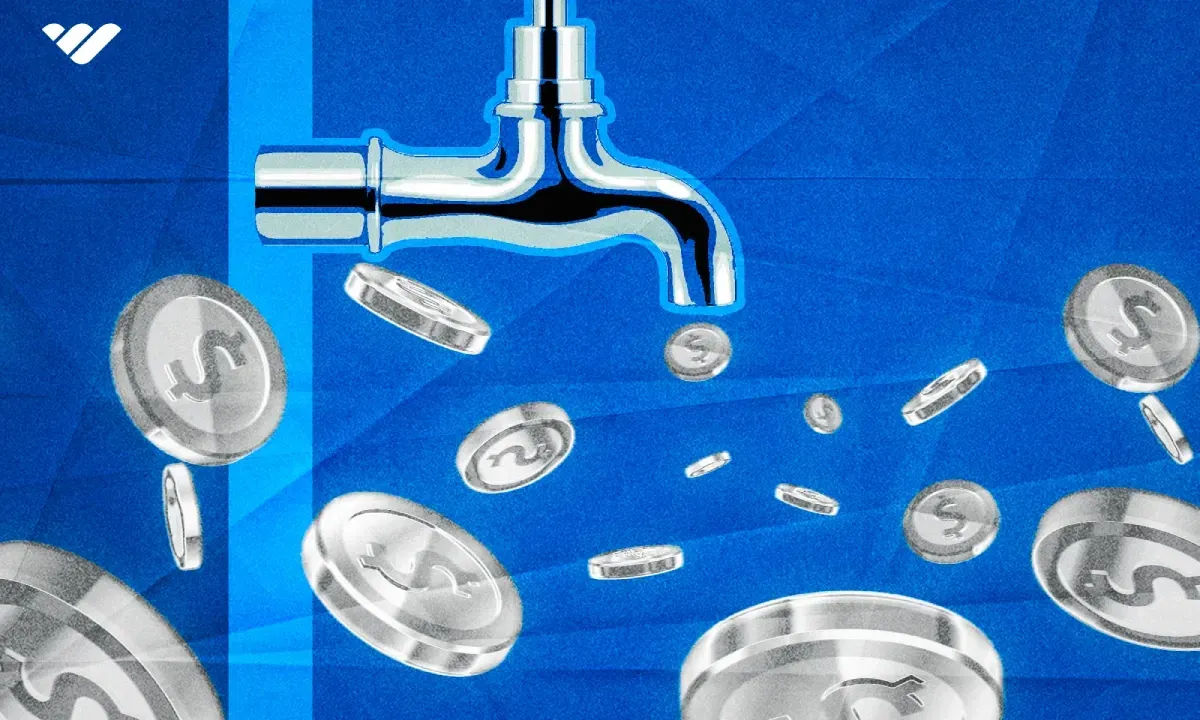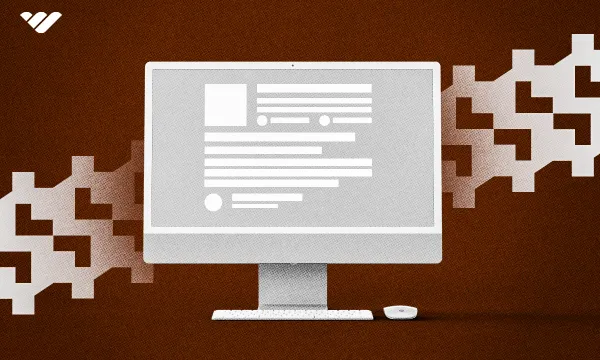One of the greatest hustles to partake in is the art of flipping, and the more expensive the item you’re dealing with, the greater the profit potential.
If you have the budget and knowledge, cars are a great item to flip, with profits that can come both quickly and in large amounts if you know what you’re looking for, can act fast, and have a little bit of luck and a lot of patience.
In this guide, we’ll go over how you can make money flipping cars, including some key considerations before diving in and an exact step-by-step process to carry out in order to be profitable. We’ll wrap up by sharing some secret tips that the most experienced car flippers use, and you’ll also learn where you can go if you want a fully comprehensive resource in the form of a private group so you can succeed with your flipping aspirations.
Is Flipping Cars a Good Business Idea?
Flipping cars for profit is not only possible, but it’s quite a common side hustle or full-fledged business for many, so it’s a great business idea if you have a decent budget but don’t know what business you want to start yet.
However, if you really want to succeed and make good money as a car flipper, you’ll want to build a good knowledge base and understand any potential pitfalls to avoid in addition to the best practices for sourcing and dealmaking.
How Profitable is Flipping Cars?

Car flipping has the potential to be an extremely lucrative side hustle or even a full-time business–that is, if you know what you’re doing, and you have a defined and somewhat substantial budget to begin with. To put some exact figures to this question, there are different ranges of profit margins depending on your initial budget.
If you’re targeting cars in the low-end range, you might be able to profit a few hundred to a few thousand dollars on an investment of $1000-$5000. However, with these cars, there might be significant repairs needed that can have potentially further unseen complications. A budget of $5000-$15000 will allow you to find cars that are in better condition that you can still realistically make a 10-30% profit margin from.
So, if you are able to flip a few cars each month, you’ll be approaching a full time income, making it quite a profitable business.
However, before you get started, there are several things you’ll want to have in mind to understand what you’re getting into.
Key Considerations Before Trying Car Flipping
As profitable as car flipping can be, going in blind can actually be a fast way to lose hard-earned cash. Here are some key considerations you’ll need to have if you’re seriously thinking about flipping cars:
Have a budget
Car flipping is on the expensive side, so you need to have a healthy budget set aside in order to effectively and profitably engage with the market. Your budget needs to include a healthy cushion that goes far beyond the cost of the price range of the car you’re targeting, as a big part of car flipping is being ready to make repairs or even actively seeking out cars that need repairs.
To be safe, you’ll want to err on the side of having more, so if you really want to flip cars in the future and don’t have the money yet, create a savings goal and a plan that might include incorporating another side hustle to supplement our current income.
Understand the legal landscape
As with any other consumer industry, there are regulations that apply to selling cars. Although most people don’t have to think of any legal issues when selling a car beyond being the rightful owner of the vehicle for sale, this is only because normal people only sell cars occasionally. So, if you’re just flipping a car once and you aren’t planning to do it often, you may not need anything formal to make a profit other than the consideration of any tax obligation.
However, if you surpass a certain volume, you will need proper licensing and business registration in order to remain legally compliant. Be sure to check your local region for specifics as they will vary based on your location.
Get properly licensed
Most people who sell their own cars as a private party will never need a license because their main intention isn’t income, so they’ll never exceed more than perhaps a few cars per year sold at most.
However, if you want to flip cars for consistent profit, you’ll need to get properly licensed as you may exceed your regional limit for cars sold as an individual quite quickly.
While you generally won’t need a lot at first or any formal physical presence that larger car dealers have, you’ll still need to register your vehicle flipping business, create a solid business plan and have any necessary insurance, surety bonds, and anything else you might need to be compliant, which will vary by region.
Understand that getting a license can easily cost upwards of $1000 just for the initial applications and credentials, so don’t do this until you’re sure you can see yourself living the life of finding, fixing and flipping cars.
Gain mechanical knowledge
A critical component to being able to effectively flip cars for profit is having mechanical knowledge. Just about every single one of the most profitable car flippers will know more about the car and its parts than the owner that they’re buying from, and it’s this edge that provides the profit potential.
You should understand the basic mechanics of a car and what to look for, but you should also develop make and model-specific expertise so you can gain an informational advantage over other car flippers and also potentially learn how to make some fixes to prep the car for profit on your own.
11 Steps for Making Money Flipping Cars

1- Establish and stick to your budget
Once you establish your budget, you’ll want to be careful to stick to it and not overextend yourself. In addition to any projected costs, including repairs, add an additional 10-20% cushion for any potential unexpected costs that might come up.
You should always have a good amount in reserves so that you can be absolutely sure you can cover all expenses and also be able to wait until you get a buyer at the right price.
2- Establish guidelines
Going in without specific guidelines of what you’re looking for can make the car flipping game more overwhelming and time-consuming than it needs to be.After you’ve set your budget, you should set hard limits in terms of other factors such as mileage, year, overall condition, and certain parts that need to be repaired. Sticking to a certain manufacturer can be a good idea as well, or at the very least you should pick brands to avoid. For example, you might seek out a Honda that is made between the years of 2004-2010, with mileage under 150,000, and with no check engine light.
Additionally, you can make guidelines in terms of your region. For example, if you’re near a town with a college or university, a cheap but reliable and fuel efficient car is a good model to target. If you’re in a place that is close to parks and outdoor activities, perhaps a 4x4 or pickup might be better to target.
3- Know what the car is worth
Once you have established a budget and guidelines, you’ll want to do some preliminary research to get an accurate figure in terms of what the car is actually worth. Doing so will allow you to seek and find cars within your price range and make fair offers before you actually need to commit to arranging an inspection of the car in person.
Using a fair market resource such as Kelly Blue Book in addition to finding how competitors in your local area are pricing your car will allow you to get an accurate understanding of what your car is worth. By doing the initial homework, you’ll be able to negotiate effectively and come up with a price range before meeting so that neither you nor the seller wastes time if the price is outside of the realm of negotiation.
4- Search marketplaces
Sourcing your inventory is arguably the most important component when it comes to flipping anything, and with cars, you need to know where to look. When you’re flipping cars, you almost always will not be buying from a dealer as they have already marked up the price. You’ll have to buy from a private seller that you can find and contact through many public marketplaces. Examples of where to find cars for sale include Facebook marketplace, local classifieds like Craigslist, and even eBay in some cases.
You can even set alerts for certain keywords so that whenever a new listing comes up for the car you’re looking for, you’ll receive an email notification. Be willing to expand your search radius as some of the best deals are off the beaten path, thus they receive less traffic and will give you more negotiating leverage. Additionally, if you have a dealer’s license, you’ll get access to dealer-exclusive auctions.
5- Inspect your car and know what to check for
When you show up to inspect the car in person, be prepared with a checklist and know exactly where and what to look for to ensure that the car is in good working condition. Don’t be afraid to respectfully ask to check all aspects of the car, including going for a test drive and checking mechanical components under the hood and around the body.
Sellers might sometimes hide issues or they might even be totally unaware of them, so having enough knowledge to do a thorough inspection will allow you to have confidence in your purchase and additionally will let the seller know that you’re dealing with a serious buyer who they will respect and be more likely to be transparent with.
6- Complete a vehicle history check
Inspecting a car is a two-part process, and it includes not only checking the car in its current state, but getting as much history as possible about the car’s life. In addition to getting a report from a company such as Carfax, ask the owner to provide any documents that show the repair and maintenance history of the vehicle. Any owner that is serious about taking care of a car will have these documents on hand, and if they don’t, you can use their lack as leverage while negotiating.
Some things you should be looking out for include previous ownership records, any accidents, damage and repairs, open recalls, title or odometer issues, and unpaid liabilities.
7- Make a deal
If your car adheres to the guidelines that you have initially set, get ready to make a deal.
Use any and all evidence you have to justify a profitable price point, and let the seller know that you are ready to pay immediately–cash and meeting at a bank is preferred. You can also refer to any cheaper competitors in addition to citing a fair market value resource.
You can also seek out situations where the seller might be pressed for cash or needs to sell the car quickly for any other reason, so being cash-ready and serious will allow you to get a better deal.
8- Properly handle all paperwork
A car sale is a legal transaction that needs to be properly recorded and risks having potential liabilities if handled incorrectly.
To avoid any issues, you need to make sure all of the paperwork checks out, primarily the title which shows a full chain of ownership, including a proper transfer of it to your name through your local DMV.
Only once you have the title under your name can you go out there and sell the vehicle, and while some skip adding their name to their title to get around the hassle or potential tax obligation, this is known as title jumping and is generally considered illegal.
9- Get the car ready to flip
Before thinking about listing your car, you need to allow for a good period of time to get your car to the best possible condition so that you can make the most money from your flip.
This will mean making sure to fully handle all of the necessary repairs and maintenance, both mechanical and cosmetic as the looks of a car including the quality of the paint and interior are big factors in the price.
10- Strategically list and market your car
Once your car is flip-ready, you’ll need to tell the world about it. Make sure to write a clear and accurate description, answering any potential questions or concerns within the post so that you will save any unnecessary back and forth with buyers. Having a well-thought-out and thorough description will also let buyers know that you are professional and will dissuade lowballers who often go for lazy listings.
On that same note, make sure your photos are thorough, professional and high quality so that your buyer will feel he has basically already inspected the car in person and is confident enough to come and check it out in person. You can even go the extra mile and take a video and share a public link to it for any interested buyer.
11- Complete your car sale and cash out
The final step is putting the money in your pocket, and while this is relatively simple in theory, you’ll want to take care to carry out this step properly as this is done safely, quickly and securely.
The first part before receiving the money is to have an initial price in mind and stick to it. While you want to be within the fair market rate, you will want to be profitable so be sure to negotiate effectively and only interact with serious, cash-ready buyers.
Additionally, avoid any scams–common ones include checks that initially deposit then bounce or fake or reversible transfers. Your best bet is to accept a cashier’s check or cash while meeting at a bank to verify the authenticity of the bills.
Obtain any necessary information from the buyer and be sure to properly transfer the title to the new owner.
The Secret to Flipping Cars for Profit

The difference between those who flip casually for an inconsistent side hustle and those who are able to make the big bucks is having an informational edge that is consistently executed.If your goal is to consistently flip cars for profit and as much money as possible while doing so, keep these following pro tips in mind:
Seek out low-key marketplaces
While public marketplaces such as local classifieds, Facebook marketplace and eBay are good places to find a car, there is quite a bit of traffic and thus competition from both normal buyers and fellow flippers.
Having a dealer’s license will open up the option of buying from auctions that only dealers can access, but the competition here can be tough as well, so it is best to have some backup, low-key sources.
Some of these marketplaces will include auctions from reposession or bankruptcy. Most of the general public doesn’t know about these sources, and by simply knowing this and seeking them out, you’ll have a big edge over the normal buyer as these are a potential goldmine for profitable car deals.
Exact websites include GovDeals.com and Repofinder.com, but there are other sites and sources that might be local to your region and provide some great low-key opportunities that don’t have much competition.
Just be sure to do thorough due diligence and understand any issues that the cars might have including concerns surrounding the title.
Equip yourself with tools of the trade
As a professional car flipper, you’ll want to be properly equipped so that both you and anyone you deal with take you seriously. You’ll want to start with basic tools such as a carjack, a screw gun and socket set, and a flashlight for inspection. Next, you’ll want to get an On-Board Diagnostics (OBD2) scanner, which is a device that plugs into a car and can scan for any issues and will bring up a specific code that you can refer to a manual or Google to decipher.
Having an OBD2 scanner is particularly important as it can quickly and easily display any errors that a seller might have omitted, and it lets the seller know that they can’t hide anything from you. They generally cost only a few hundred dollars and are well worth the investment as you can make this back easily with a profitable deal.
Partner with a mechanic
Just like buying, fixing, and flipping a house, most of the best deals are done with used cars that require some TLC and specific repairs that the owner is either totally unaware of or too broke or lazy to take care of. At the same time, one of the greatest expenses when it comes to flipping cars are these repair costs, which can sometimes match or even exceed the price of the car. For example, common issues that can be worth fixing like a transmission or engine repair could easily cost $1000 or more just in labor which you will save if you have your own mechanic.
So for the highest margins, partner with an in-house, reliable mechanic, and split the profits. Another benefit for mechanics is that they often can save on the cost of parts and will know which ones are the best to use as well.
Arbitrage different markets
While this could be a more complex operation as it will involve the logistics of fulfillment on top of finding two markets with profitable discrepancies, sometimes this is the secret sauce of some of the most profitable car flippers.
One example would include finding an old car in a rural town such as a Ford Bronco and giving it a full refresh and selling it in a market like Los Angeles where these cars in good condition are considered somewhat of a fashion statement and thus a commodity which results in a much higher market price.
You can also find a place where 4x4’s or pickups are a hot commodity and source them from a town where they aren’t as desirable or liquid.
Creative thinking and strategies like this are what will allow you to make the most profit from the car flipping market.
Learn How to Flip Anything from Cars to Sneakers with Whop
Getting to a respectable level of success with flipping cars will take time and experience of going through all of the steps laid out in this guide, and the more deals you get under your belt, the closer you’ll be to having a business that could end up being a lucrative full time living.
Those who put in the work over time while flipping will reap the rewards of profiting from price discrepancies in a free market, and this is a game that you can apply not just to cars but to many other items—here is a full list of the easiest items to flip for profit if you want more ideas.
Want to shortcut the learning curve and tap into proven strategies that experienced pros have used in their exact niches? You can do so by joining a Whop community. There’s a vast assortment of reselling experts covering everything from sneakers to tickets and everything in between. Check them all out and get started with your journey as a profitable flipper today!
Car Flipping FAQs
Which car brands should I flip?
Although there is a broad market that includes many different car brands, a general rule of thumb for car flipping is that it’s best to deal with a car that is easy to repair and find parts for, and one that is more reliable. That said, Honda, Toyota and some years of Ford and Chevorlet are some car manufacturers that are worth targeting for flipping.
How much budget do I need to flip cars?
When it comes to flipping cars, it’s possible to start with a budget as low as a few hundred dollars, but in this case you’ll often be dealing with a non-working shell that requires the burden of investing to get to a decent condition. At the minimum, if you want to seriously engage in car flipping, a budget of around $5000 is a good place to start, and you should always buy a car that is beneath your leave cushion for any potential additional expenses.
Do I need a dealer’s license to flip cars?
While the specifics of the exact number will change based on your location, you will need to have a dealer’s license if you exceed selling a certain amount of cars within a certain period of time. The requirement for a dealer’s license is based on the intention of the seller, so if you plan to start a car flipping business, you should take the time to make a thorough business plan and get a dealer’s license so that you can be compliant with all regulations and be able to access benefits such as dealer auctions.
What is title jumping?
Title jumping, also known as title skipping, hopping, or floating, is the act of never assigning your own name to a car that you have purchased, keeping the car title associated with the seller. Some car flippers do this to reduce the number of owners and to potentially avoid any registration fees, taxes or any other legal requirements. However, this is generally illegal and in some states it is even considered a felony, so be sure to always properly assume the title of a car that you have purchased.
Is flipping cars illegal?
While flipping cars is not universally illegal, you will have to keep in mind any licensing requirements or restrictions that apply to your local jurisdiction. Look at specific rules such as when and how you can and should get a dealer’s license, and make sure your business is properly registered so that you can continue without any potential issues.





